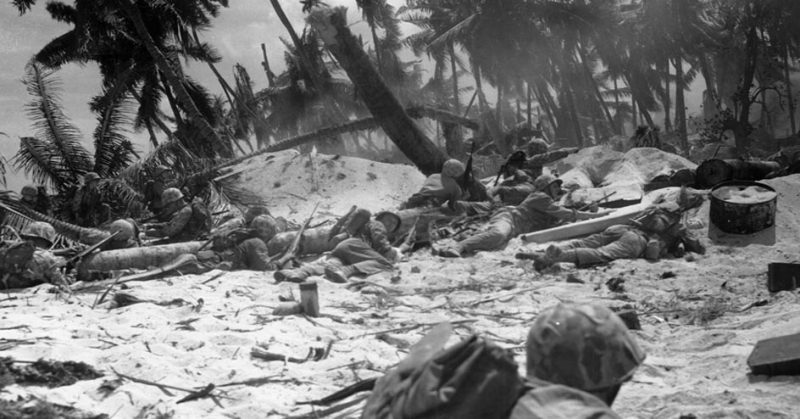Officials are disinterring the remains of 94 unidentified Marines and sailors who were killed in the Pacific during one of the bloodiest battles of World War II.
The Battle of Tarawa in 1943 saw more than 990 US Marines and 30 US sailors killed during three days of fighting. Around 550 have yet to be identified, including some that are still in Tarawa, according to Major Natasha Waggoner, a spokesperson for the Defense POW/MIA Accounting Agency (DPAA).
The 94 servicemen are being tested using new advances in DNA testing which increase the probability they can be identified.
The disinterments began in October according to Gene Maestas, spokesperson for the National Memorial Cemetery of the Pacific. The cemetery, also known as Punchbowl, is expecting to move the last of the remains soon.
Two years ago, the Pentagon provided new criteria for exhuming remains from military cemeteries. It then began digging up almost 400 unknown servicemen buried in Punchbowl. The sailors were all stationed on the USS Oklahoma and were killed during the 1941 attack on Pearl Harbor by the Japanese. It is expected that it will take five years to identify all of those remains.
There is no estimate on how long it will take to identify all the remains from Tarawa. Some of the skeletons from Punchbowl are incomplete, and some of the remains are still in Tarawa.
Recently, Punchbowl received clearance to exhume 35 graves that are thought to contain the remains of sailors from the USS West Virginia, also hit in the Pearl Harbor attack. Those disinterments will be scheduled after the cemetery can get a permit from the state of Hawaii.
Tarawa is now part of the Republic of Kiribati. It sits about 2,300 miles southwest of Honolulu.
74 years ago, many US Marines lost their lives to Japanese machine gun fire when their boats were stuck on the reef at low tide. The Marines that got to the beach encountered fierce hand-to-hand combat.
Of the 3,500 Japanese troops defending the island, only 17 survived. Out of the 1,200 Korean slave laborers on the island, only 129 survived, ABC News reported.
The US dead were quickly buried, but many were dug up again soon as the Navy needed an airstrip to continue pushing westward to Japan.
